Adriacom I Business Services & Immigration
Montenegro Awaits - Let's Make it Yours.
Podgorica City Guide
Hardly ever listed as one of Europe’s top city-break destinations – worthy of crossing the planet to visit – Montenegro’s capital and at the same time largest city, Podgorica (pronunciation: pod·guh·reet·suh), has somewhat of a reputation for being dull and lifeless. But that is only half the story, read on to learn more about the former ‘Titograd’, one of Europe’s youngest capital cities built above the ruins of its Doclean and Ottoman counterparts.
So why visit Podgorica?
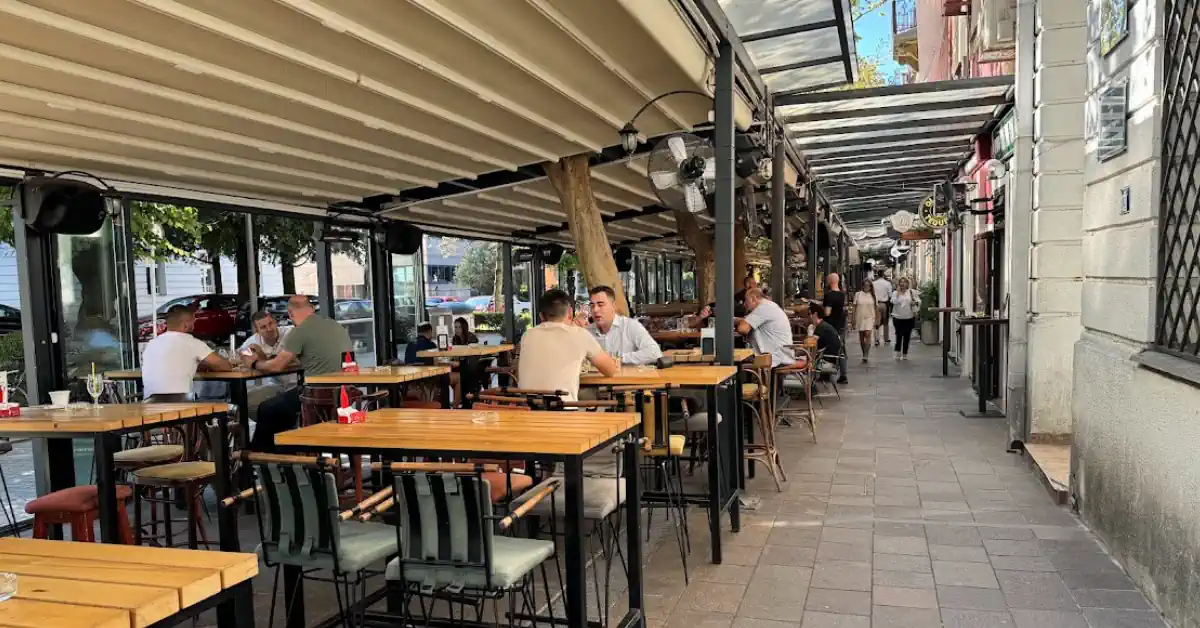
Table of Contents
ToggleYou would want to explore Podgorica to experience its magnificent (and very distinct) coffee culture; it’s one of those destinations where drinking coffee is not solely about the caffeinated drink, but about discussing daily affairs, aesthetics, building beautiful memories, and sealing business deals.
You might also be interested in visiting Podgorica because you’ve heard great things about its picturesque natural surroundings, or because you’re a fan of brutalist architecture (it’s one of the hotspots for this building style in Europe) and have always wanted to see one of the city’s most emblematic and fascinating neighborhoods: Blok 5?
Podgorica is an exceptionally laid-back and tranquil city, but unlike many other European capitals, it undeniably offers a lack of historic architecture and other tourist attractions. Instead, it has a blend of Yugoslav-era and contemporary neighborhoods, contrasting with what is left of its antebellum buildings, and still making for a great getaway for those able to look beneath Podgorica’s not-so-gritty surface.
Podgorica at a Glance
- It is Montenegro’s most populous city with 200,000 inhabitants
- In July and August, Podgorica can become unbearably hot with temperatures sometimes exceeding 40°C
- Podgorica’s Old Town is tiny and rather underwhelming
- Podgorica is one of the most affordable capital cities in Europe
- Outside of summer, it rains a lot here, making it so wonderfully green
- Podgorica has a great location: both the ski centers of Kolasin and the beautiful beaches of the Budva Riviera are within an hour’s driving distance
Beaches close to Podgorica
If you’re driving from Podgorica, you’ll find some truly great beaches within a 1.5-hour driving distance: Drobni Pijesak Beach, Perazica Do Beach, and Lucice Beach on the Budva Riviera, Sveti Stefan Beach, or even Becici Beach traffic permitting. And if you’re going by train, then Maljevik, Strbina Beach, and Sutomore Beach are also within an hour of Podgorica’s Central railway station.
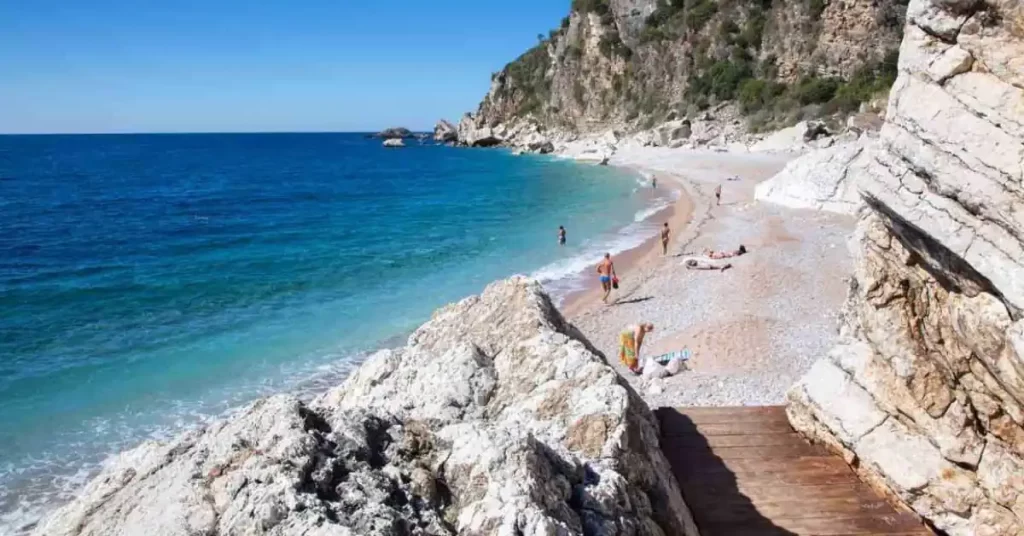
Budva’s Top Beaches
Day trips to Budva’s pristine beaches are popular with Podgorica locals. Escape the heat by reclining under a beach umbrella and taking a dip in the clean Adriatic.
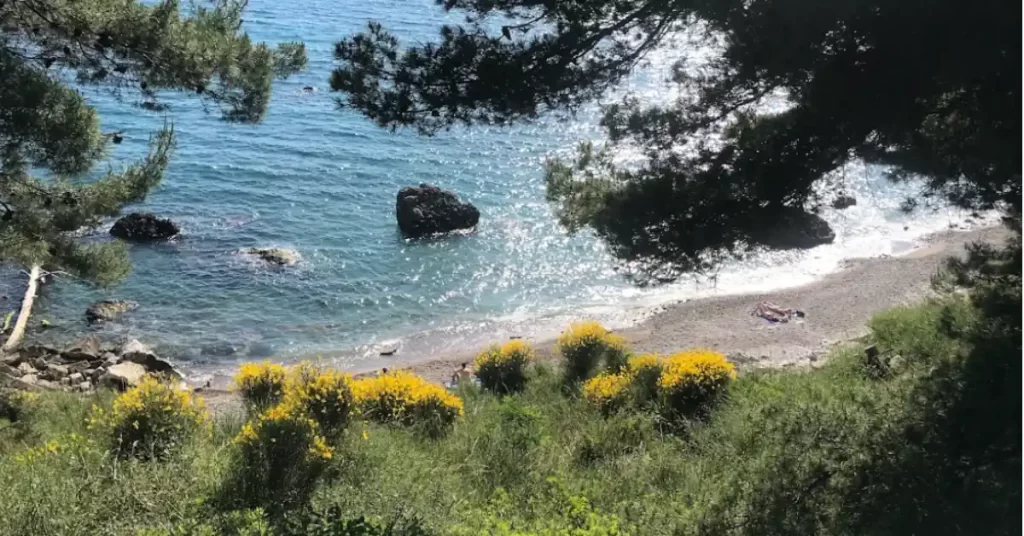
Bar’s Top Beaches
From Canj to Utjeha, and everywhere in between, read this guide to learn more about the 23 best beaches in Bar that can easily be accessed via the Sozina tunnel.
Major Attractions in Podgorica
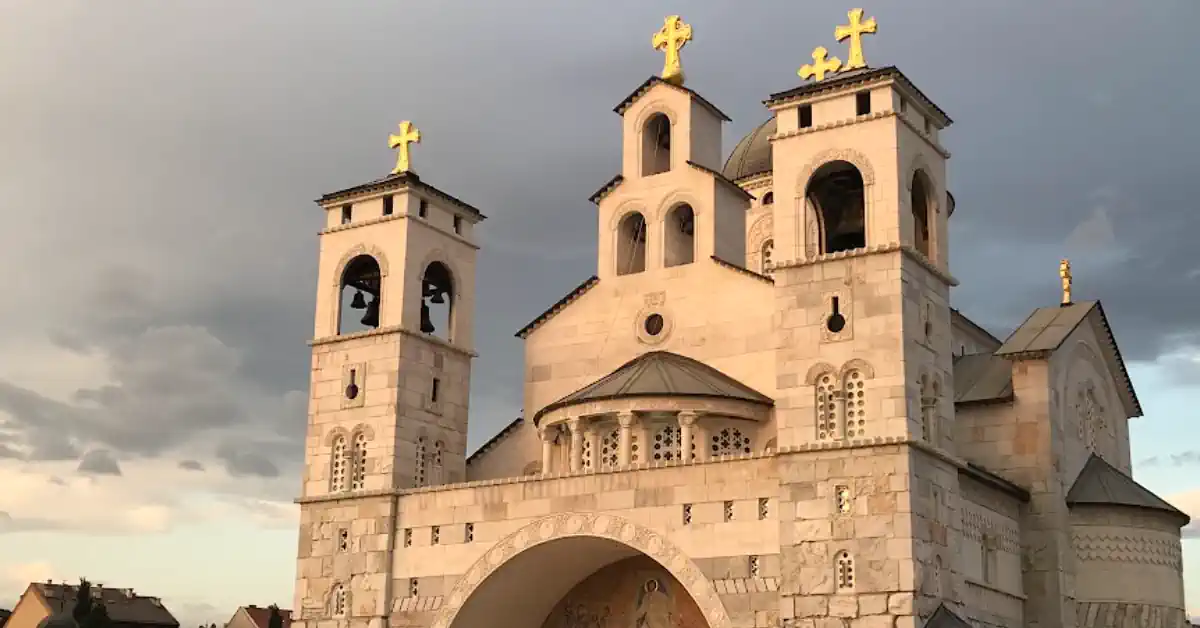
And while there is no single architectural style that defines Podgorica – a plethora of compositions have been racked up over the centuries – Montenegro’s capital city is not exactly rich in charming historic landmarks, and only a handful of them have survived the city’s rather tumultuous past, most notably Sahat Kula, the Turkish clock tower from the 18th century, and the Roman-era Ribnica Bridge spanning the picturesque river with the same name.
This age-old stone edifice was rebuilt under Ottoman Rule and is locally also known as the Adzi-Pasha bridge. Not an imposing structure per se, it certainly has its charms, overlooking gorgeous waterfalls and the emerald-colored Moraca River, a popular swimming spot during the warmer months of the year, complete with a riverside beach bar for those refreshing drinks!
The mighty Orthodox Temple of Christ’s Resurrection, Podgorica’s largest and most beautiful religious structure, is definitely worth visiting, and there is no excuse not to because admission is completely free. It truly stands out for its exquisite golden frescoes and exterior stone carvings, and there’s an adjacent church cafe offering delicious snacks and drinks.
Podgorica’s Best Restaurants
If you know where to look, you won’t lack dining options here in Podgorica, and you can even find some outstanding culinary gems. Plenty of small streets in the heart of the city are pedestrianized, housing many charming eateries with lively outside terraces, serving local Adriatic and Balkan cuisine, but there are also an increasing number of international options to choose from.
Porto Restaurant
Enjoy traditional Adriatic cuisine surrounded by palms and olive trees in Porto’s tranquil courtyard, at this popular restaurant next to the Millenium Bridge. Its menu items are of high quality, and include a wide range of fresh fish, pasta & risotti, plus their highly revered octopus dishes – if you need a recommendation, try the incredibly tender octopus salad or roasted octopus with potatoes and vegetables.
Steak House
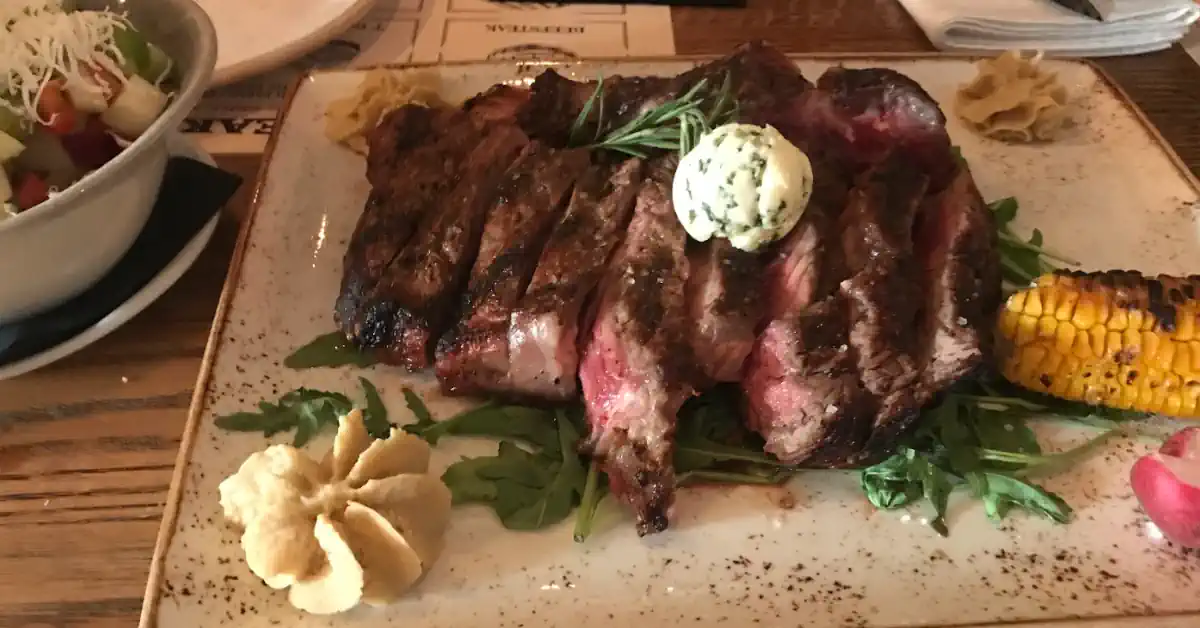
If juicy dry-aged meats are what you are after, then Podgorica’s Steak House is a venue worth seeing. By sourcing their meat from their own farms located in the Montenegrin hinterlands, they guarantee that each Ribeye, T-bone, and Tomahawk steak has that highly covetable, hearty beef flavor with a soft consistency. Freshly caught fish and seafood (tuna steak, salmon steak, and grilled squids) can also be enjoyed alongside their famous carnivore offering.
Spago
A favorite with locals, this elegant restaurant in the City Quart neighborhood of Podgorica offers excellent value for money with its diverse breakfast, lunch, and dinner menus. A rich selection of domestic and international wines, Neapolitan-style pizzas cooked in a wood-fired oven, and many healthy options dictated by quality ingredients, are just some of the draws of this versatile and sought-after restaurant.
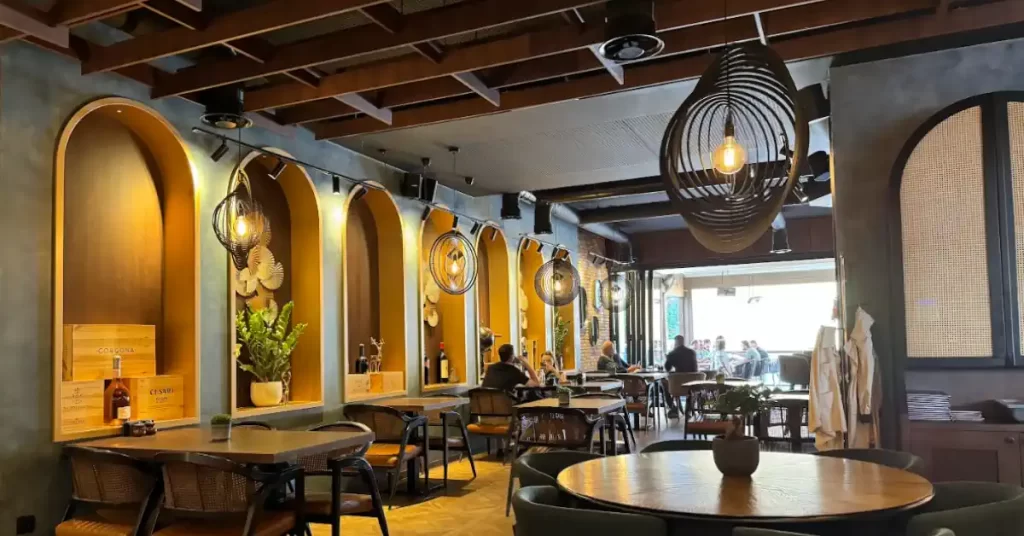
Podgorica’s Top Restaurants
Explore the best restaurants in Podgorica, from modest taverns offering typical Balkan food to refined Adriatic eateries and international dining spots.
Hotels in Podgorica

One of the most voguish and probably the best locations in the heart of Podgorica is the Hemera Boutique Hotel. This affectionately restored townhouse with its cool gray facade is full of charm, boasting a small spa center (incl. gym, Turkish steambath, Finnish sauna), as well as a top-notch a la carte restaurant on the ground floor. Each of the 15 residences is well-appointed with dark, natural hues and stylish furniture.
For a similar experience, on the other side of Podgorica’s compact ‘Nova Varos‘ neighborhood, you’ll find the magnificent 30-room Boutique Hotel Boscovich, a beautiful Parisian-style edifice, decorated in a fresh, contemporary style that opened to fantastic reviews. One thing is clear, these awesome bouitque stays will transform any visit to Montenegro’s capital into a genuinely memorable experience.
For those business and leisure travelers looking for 5-star accommodations with great amenities, there is probably no way around Hotel Hilton, which occupies a privileged position between two city parks and comes with a spacious indoor swimming pool, 24-hour fitness center, and ambient roof terrace & bar – perfect for sun-lounging and watching the sun set above Podgorica’s rooftops.
Alternatively, consider booking a room in Hotel Ziya, another contemporary five-star hotel that not only sits within just a five-minute walking distance of Park Forest Gorica but also the heart of Nova Varos with its many bars and restaurants. Enjoy beautifully designed and comfortable residences alongside probably the best hotel wellness offering in town.
Things to do
Unlike some of Montenegro’s sleepy seaside towns, Podgorica has a much richer cultural life year-round, with an explosion of new fashionable restaurants, boutiques, people-watching spots with cozy courtyards and creative cocktail menus, plus its up-and-coming cultural scene, museums and galleries.
Visit a Museum
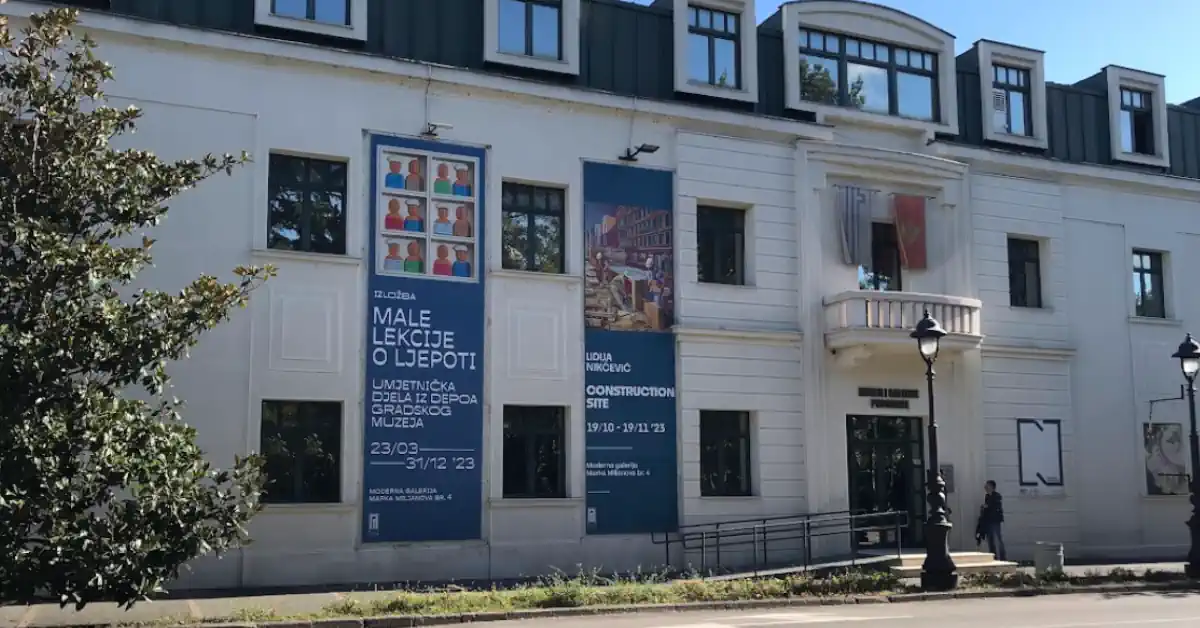
The City Museum of Podgorica offers permanent archaeological, ethnographic, and contemporary collections consisting of sculptures, traditional attire, artifacts from Montenegro’s Royal Family, drawings & paintings from names such as Vojo Stanic, Petar Lubarda, and Dado Duric – an interesting place to learn more about Podgorica’s history and culture. Admission is free!
Gorica Park Forest is ideal for a Stroll
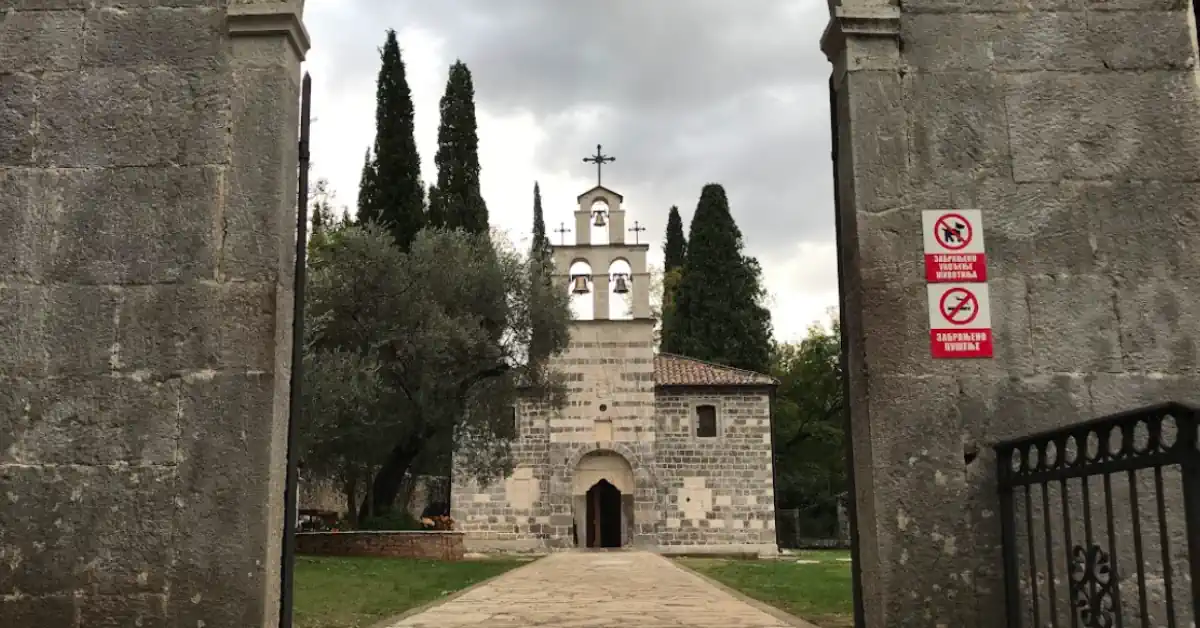
Situated within easy reach of the city center, Gorica Hill is a real green oasis popular with families, joggers, and cyclists throughout the year, but especially on hot summer days to escape Podgorica’s scorching summer heat. It is after this, that the 130-meter-tall forested hill Montenegro’s capital is actually named, whereas Podgorica translates to ‘the city under Gorica Hill’.
It is not surprising then that its oldest sacral building – the 11th-century Saint George’s Church – is also located right here. It is well worth visiting for its vibrant frescoes and beautiful ancient artwork. From there, a loop hike winds its way through the beautiful park forest, past a war memorial and a children’s adventure park with ropes, chain bridges, and more.
The rope park is the epitome of a fun day out with the kids, and there is also an adjacent cafe where parents can gather over a cup of coffee while their kids play. Architecture-wise, the Mausoleum to the Partisan Fighters bears resemblance to the Njegos Mausoleum in the Lovcen National Park. It is dedicated to those who died fighting as Yugoslav resistance fighters against the Nazi Occupation and is also the burying site for two revolutionaries and sixty-six national heroes.
Cool off in the Moraca
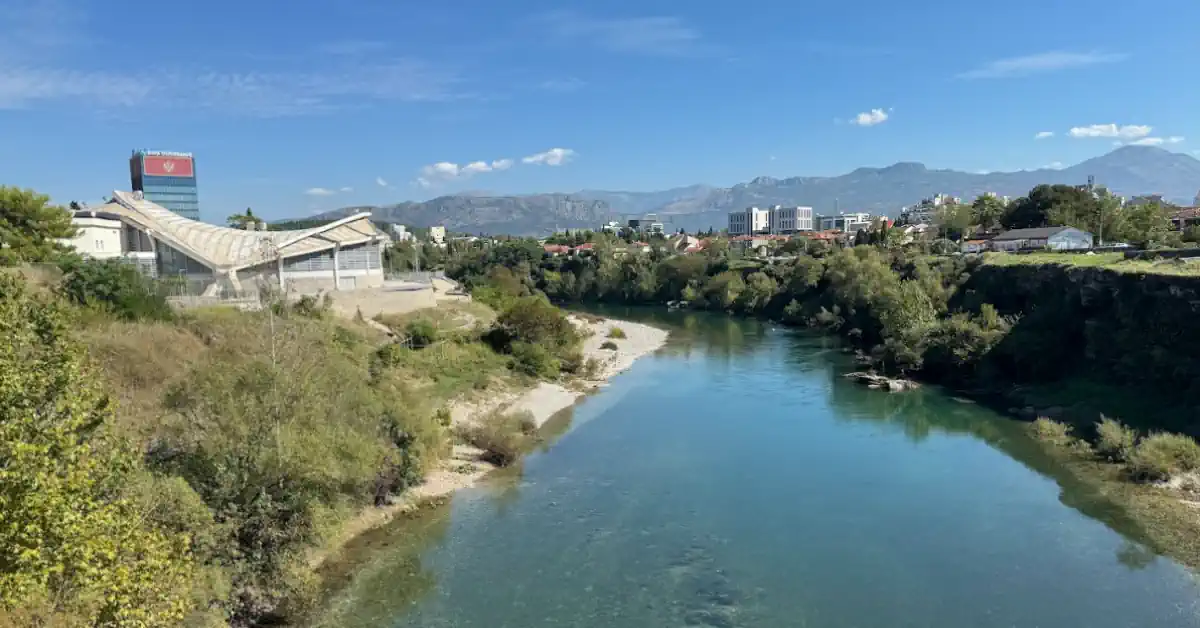
The crystal-clear waters of the Moraca provide a good opportunity for swimming and kayaking, and then relaxing with an ice-cold beer or cocktail in the stylish ‘Na Moracu‘ beach bar – the best spot in town for riverside sundowners. However, the Olympic-size swimming pool of the Moraca Sports Center presents itself as a viable (and warmer!) alternative to the chilly Moraca River.
Visit a Winery

Podgorica with its mild and sunny climate has more than 30 wineries (vinarija), and in recent years many of the local winegrowers have opened their doors to visitors for degustations and wine tasting tours. Zenta Vinarija Vucinic is a family-run winery renowned for quality reds made from endemic Vranac and Kratosija grapes.
Also located in the fertile Skadar Lake valley in the small hamlet of Beri and just a 15-minute drive from Podgorica, Vinarija Cetkovic works in harmony with its picturesque environment, producing admirable wines exclusively from grapes grown on its 1,5 hectares of vineyards. If you’ve dined out at Wine Bar Bucca (or Segredo), you’ll be familiar with their wines.
Alternatively, a visit to Plantaze’s Sipcanik wine cellar is always recommended. The huge state-owned winemaker with 2,300 hectares of vineyards was founded in the 1960s to revive and improve upon the traditional wines of Montenegro. Among others, they produce the highly aromatic Premijer Vranac and Vranac Reserve, which can be tasted and bought straight from their shop located in the former military’s airport underground facilities.
Explore Montenegro’s Brutalist Past
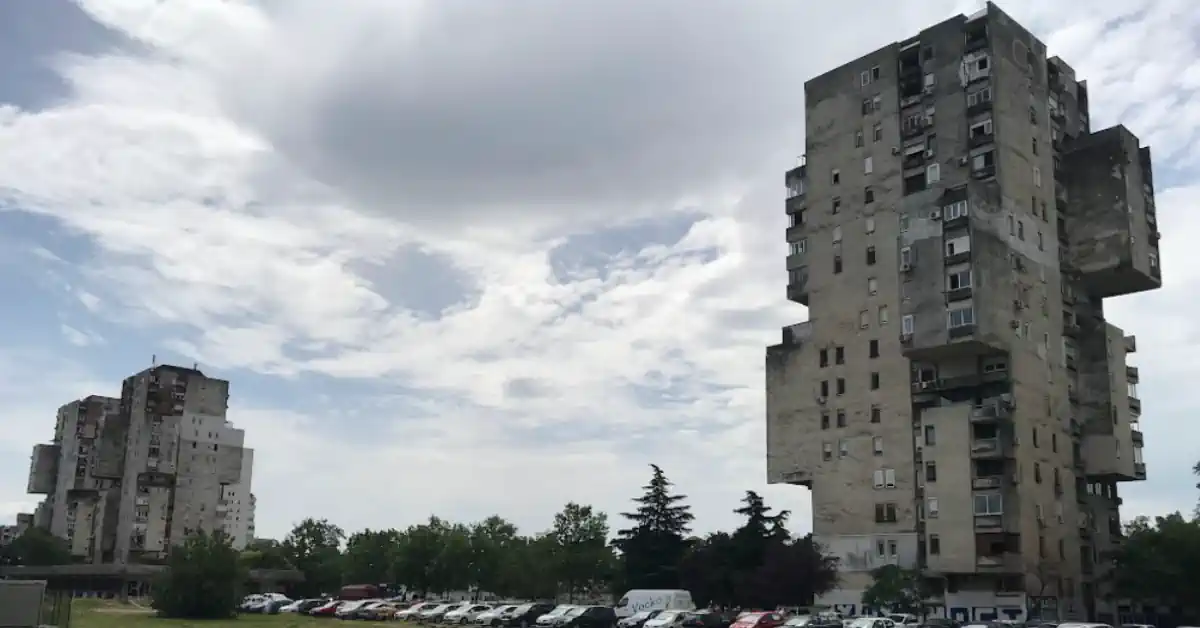
Brutalism and Social Modernism are styles of building designs that developed in the aftermath of World War II and were highly controversial for their monolithic, rigid concrete structures. Loved by some and hated by others, Podgorica boasts many (not always well-preserved) examples of this Mid-20th-century architectural style.
Svetlana Kana Radevic’s contribution to Socialist Brutalist architecture stands on its own. While her design of Podgorica’s main bus terminal, which was heavily influenced by Le Corbusier’s Palace of Assembly in India, is one of her often-forgotten works, the construction of the Monument to the Fallen Fighters at Barutana, and particularly her design of Hotel Podgorica, made her finally earn international recognition.
Located north of the Orthodox Temple of Christ’s Resurrection, another interesting Socialist Modernist town-planning project – or ‘the Wild West’ as it was referred to at the time of its construction – Blok 5 was completed in the early 1980s, consisting of five bulky residential towers and eight structures designed by Montenegrin architect Mileta Bojovic.
View one of Podgorica’s Archaeological Sites
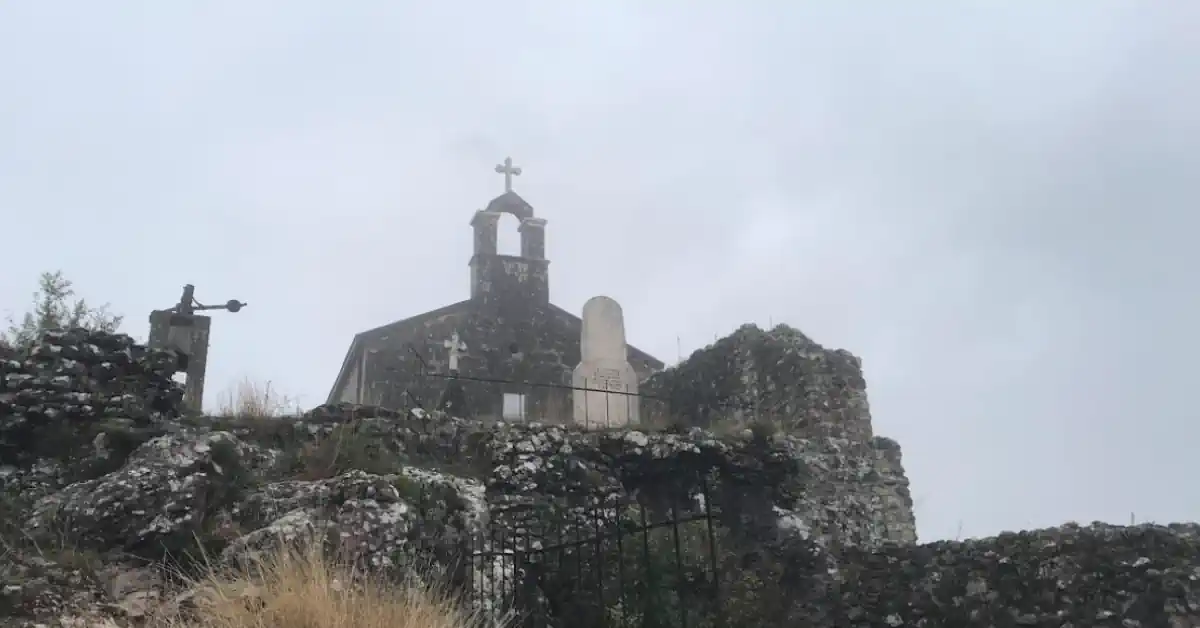
The Illyrian city of Doclea (Montenegrin: Duklja) was founded more than 2,000 years ago. Its location on the banks of the Moraca River, surrounded by towering mountains, and its mild climate (perfect for wine-growing!) gave the ancient Illyrian stronghold its strategic importance and led to Duklja becoming a thriving trade hub between the Dalmatian Coast and Shkoder in Albania.
Not a very tourist site per se – the Duklja Ruins are situated just outside of the city center. It is possible to see the remains of a temple, the layout of what used to be a market square (Doclea used to count 30,000 inhabitants at its peak!), and the crumbling remnants of a typical Roman thermal bath. Our tip: If you like hiking, take the 10-kilometer-long ‘Gorica – Malo Brdo – Duklja – Trail’ starting at the entrance of Gorica Park Forest, in front of Saint George’s Church.
Fifteen kilometers northeast of Podgorica you’ll find another, still largely undiscovered, ancient Illyrian city from the 4th BC that goes by the name of Medun (also known as Meteon). Perched atop a small hill, overlooking its pristine surroundings, Medun Fortress with its relatively well-preserved town walls made of big stone blocks, is open to the public.
Discover Podgorica’s Picturesque Hinterlands
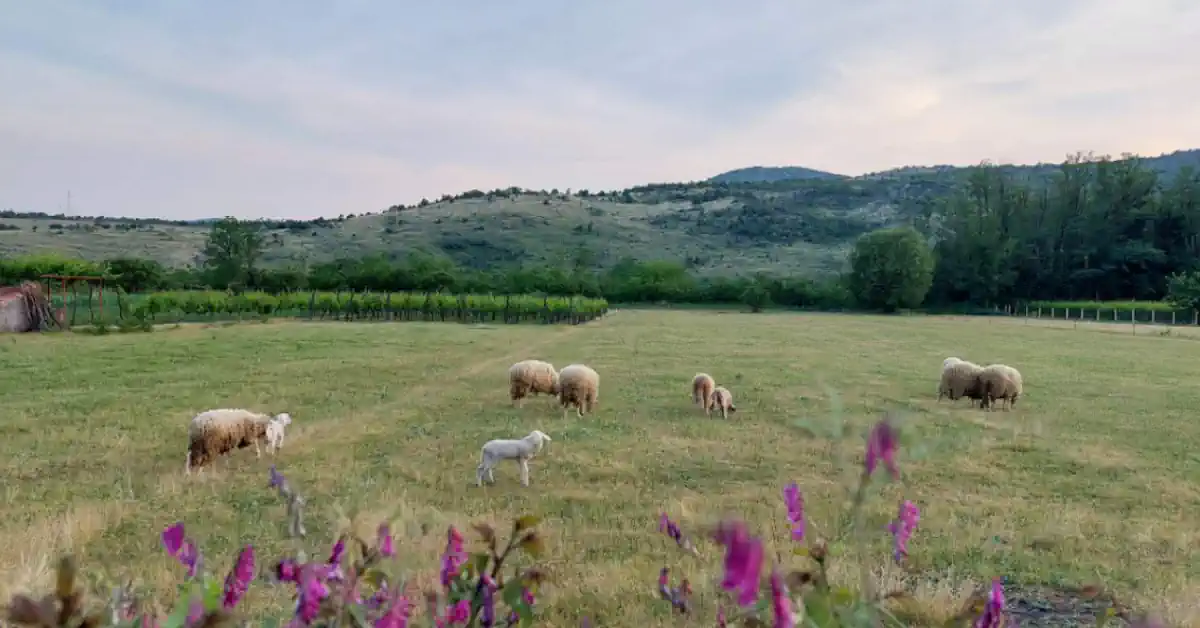
Think endless winding roads, emerald-green rivers, lush alpine meadows, enlivening hikes to craggy peaks, and picnics to sample the farm-fresh local produce – within one hour’s drive of Montenegro’s capital city, there is an almost endless supply of natural wonders. Montenegro’s version of the Niagara Waterfalls is an incredibly beautiful spectacle of nature.
The waterfalls are part of the Cijevna River, which originates in Albania’s part of the Accursed Mountains before becoming a tributary to the Moraca. When enough rain has fallen (the river sometimes dries out completely in the peak of summer), the craggy cliffs produce a picture-perfect waterfall and natural pond to be enjoyed by photographers, swimmers, and adjacent Restaurant Niagara’s guests over a snack or drink.
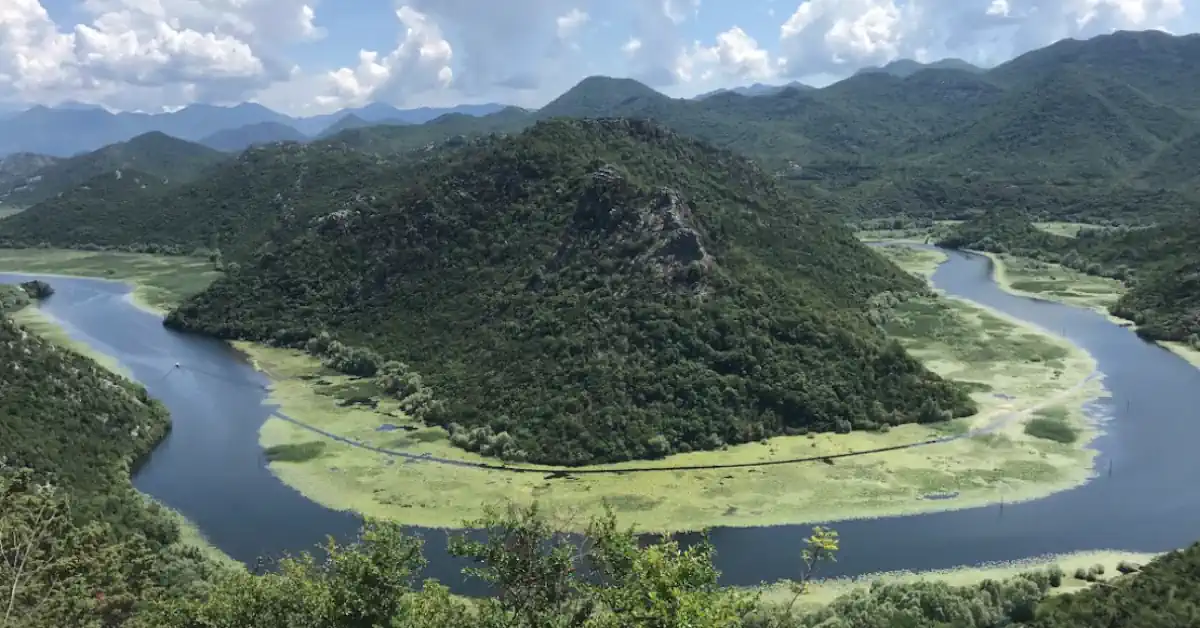
No less impressive is the Pavlova Strana Viewpoint, a horseshoe-shaped incised meander of a picturesque waterway that winds its way across Rijeka Crnojevica’s lush and biodiverse wetlands before ending in its mouth at Lake Skadar. A paradise for landscape photographers, this viewpoint has to be one of Montenegro’s prettiest and most magnificently placed locations.
Visiting during the winter season? With the opening of the Smokovac – Matesevo highway section in July 2022, hitting the slopes while being based in Podgorica is now easier than ever. The ski resorts of Kolasin with more than 45 kilometers of slopes are everything you need for a fun-filled weekend with friends or family.
History and Culture
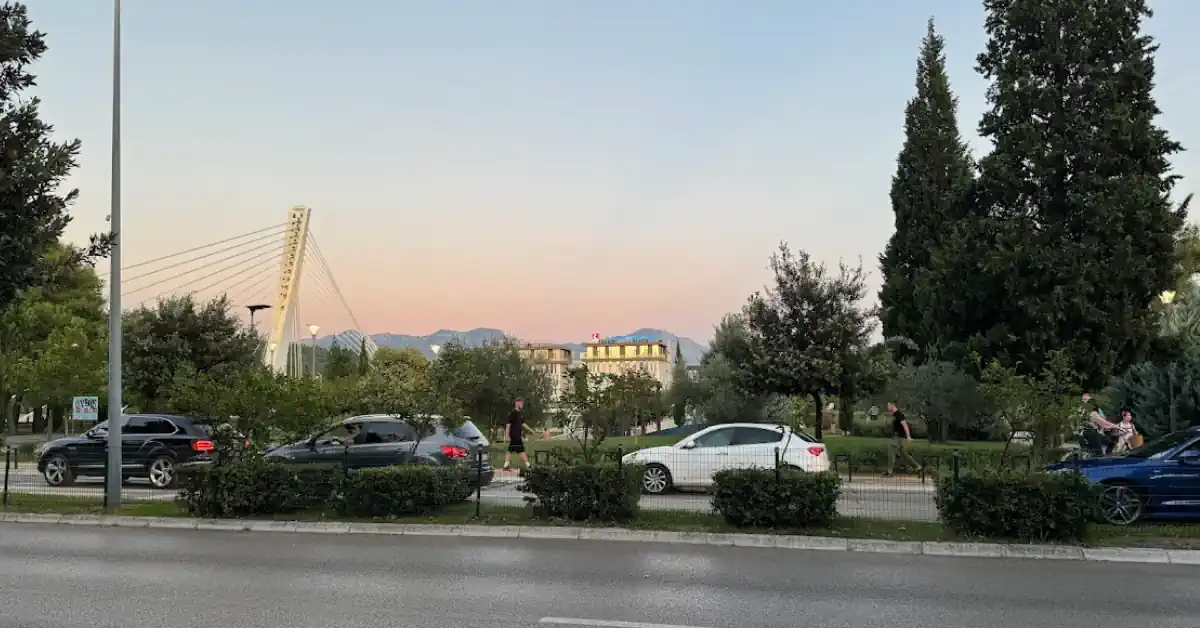
The city of Podgorica was established as ‘Ribnica’, probably in the 11th century, by the medieval Serbo-Montenegrin Nemanjic dynasty, building on the remains of ancient settlements from the period of Classical Antiquity. Following centuries of Roman, Byzantine, and Serbian rule, Ribnica, which was also referred to as Podgorica from 1326 onwards, was eventually conquered by the Ottoman Empire in 1474.
At the Congress of Berlin, a diplomatic meeting with the aim of reorganizing the newly independent Ottoman territories on the Balkan Peninsula – including Montenegro – gained independence in 1878 after 404 years of Turkish occupation with Cetinje as its royal capital. Montenegro’s liberation ignited a period of exponential economic development and population growth.
In 1918, when the city’s population counted a mere 13,000 inhabitants, Montenegro became part of the newly established Kingdom of Yugoslavia, and then following World War II, the Socialist Federal Republic of Yugoslavia. In 1946, Podgorica was renamed Titograd, in honor of the charismatic Yugoslav partisan leader and statesman Josip Broz Tito, and finally became Montenegro’s new capital.
The devastation caused by strategic aerial bombing campaigns during World War II leveled the playing field for creative city planners, providing a once-in-a-lifetime opportunity to build things from the ground up according to the principles of socialist forward-thinking and modern architecture.
Adored by its proud residents who cordially also refer to it by its nickname of ‘Pośa‘, Podgorica today is an increasingly international, booming capital city that has preserved its laid-back nature. Though only visited by a small number of tourists each year (only 2,4% make the detour from the more popular Adriatic seaside towns), Podgorica may be well worth a visit for those interested in a genuine Montenegrin travel experience.
Living in Podgorica
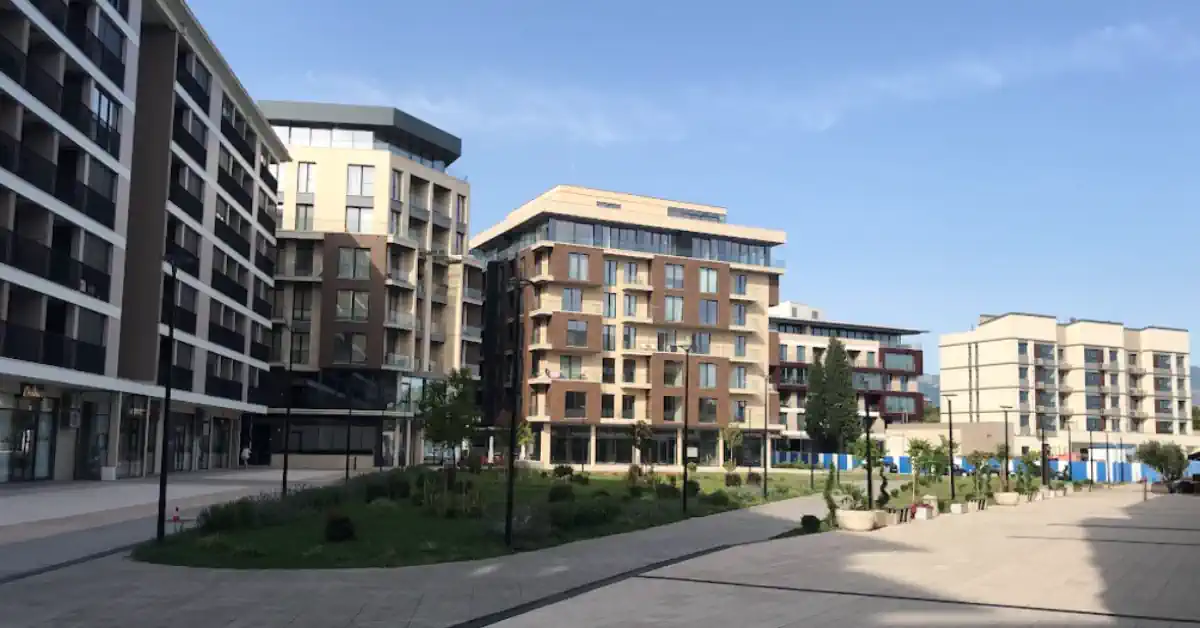
The capital of Montenegro with its many parks & green spaces, easy access to nearby mountains, lakes, ski resorts, and the beaches of the Adriatic, provides a good quality of life to its happy long-term residents. It has something to offer year-round, which is not always the case in other parts of Montenegro, particularly in the off-season.
Podgorica’s city center is within a 15-minute driving distance of its international airport, from where you can reach most major cities in Europe. Buying or renting a property here has the benefits of both living in a well-located, easygoing city, offering a wide range of property types such as reasonably priced apartments in the downtown area and detached houses on the periphery.
The most desirable neighborhoods for newcomers to Podgorica are the bustling City Quart and the peaceful Gorica C district beside Gorica Hill, and just a few steps away from the bohemian Njegoseva Street with its great assortment of trendy bars and restaurants. On a hillside southwest of Podgorica, overlooking the entire city, Verde Village is the location of dream houses and condos, offering privacy and exclusivity.
Four international schools offer high-quality curricula, especially if you wish your children to receive a British (or French) education. Commited to promoting a dynamic learning environment and nurturing the pupil’s academic and social development, the QSI International School of Montenegro, United Kids International, Adriatic International, and the French European School ensure your children are well-prepared for success in an ever more globalized world.
Shopping in Podgorica
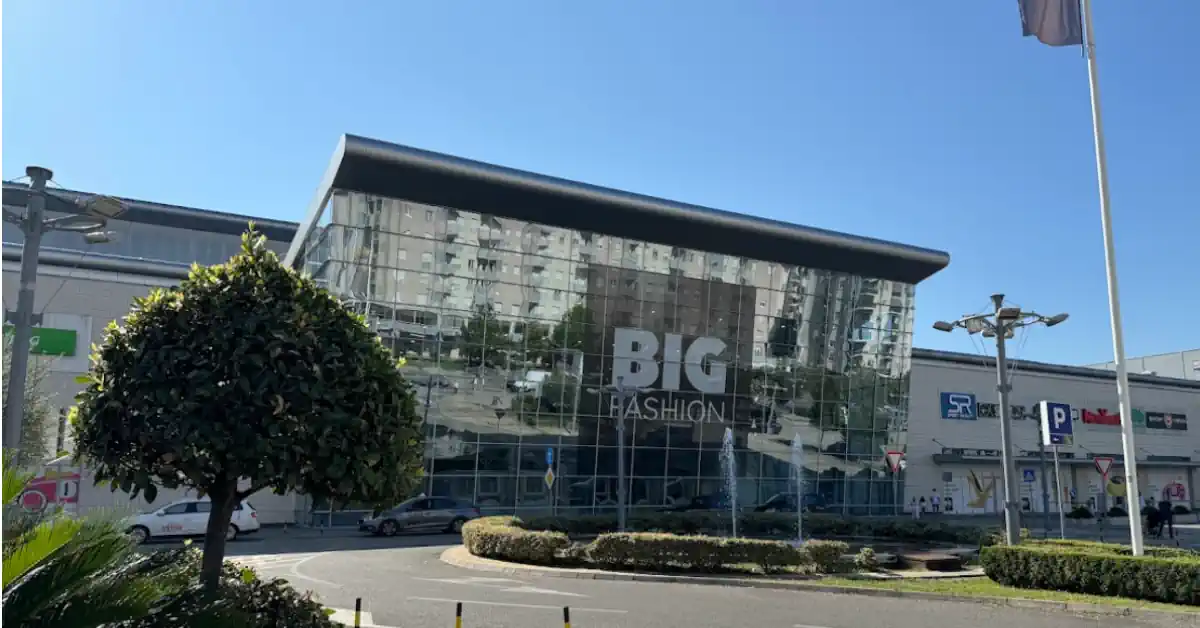
Being the capital city and home to a third of Montenegro’s population, Podgorica offers everything from high-street fashion boutiques to local shops selling some wonderful handmade products. For over a decade now, Bulevar Dzordza Vasingtona has become the most important luxury shopping street in Podgorica, lined with the boutiques of Max Mara, Bogner, BOSS, BOGGI Milano, and many more.
Another shop not to be missed is DURO, a beautifully decorated niche perfumery that specializes in fine fragrances from across the globe. It prides itself on offering the most coveted, carefully curated perfume selection in Montenegro, boasting many exclusive fragrances and colognes you will have trouble finding anywhere near.
For the perfect shopping center experience (where everything you need is under one roof) head to BIG Fashion. Stocking a wide array of international names, including Zara, Superdry, OVS, Bershka, Mango, and other top brands, it caters to the diverse needs of locals, expats, and visitors alike. Plenty of parking, too!
Events in Podgorica
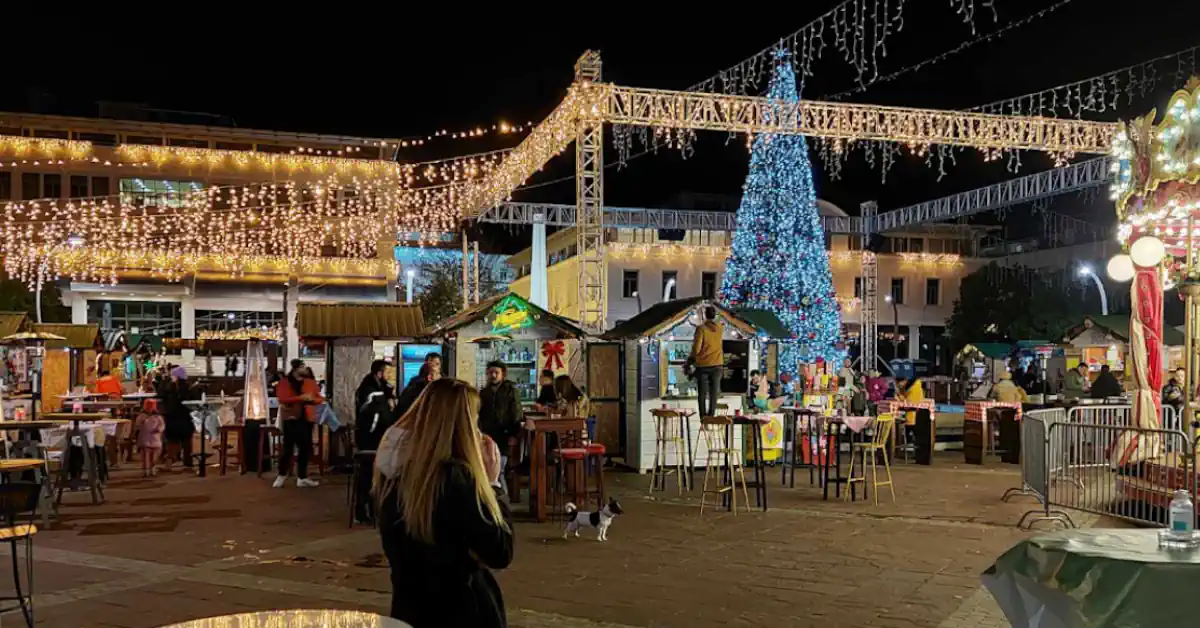
The city at the foot of Gorica Hill is actually a great escape for a few days in the low season (summers are brutal here!) to rejoice in one of the local festivities, particularly at Christmas time for the Podgorica December Market, or enjoy a wonderful open-air concert, jazz jam session, or classical ballet performance.
The Festival of International Alternative Theatre (FIAT Montenegro) is traditionally held over ten days in September, hosting visual artists, experimental theatre performers, musicians, film directors, and other creatives from all over the world to showcase their works in what probably is Montenegro’s most authentic art program – great atmosphere guaranteed!
The Christmas cheer comes alive with the switching on of Podgorica’s cozy Christmas lights, and the Republic Square (Trg Republike), is the place to be to experience it over a mug of mulled wine. The square also fills up for New Year’s Eve, with locals and visitors celebrating the start of the New Year with a joyful spectacle of open-air street concerts and lots of singing and dancing.
Transport Options to the Coast & Mountains

Podgorica is conveniently located so that you can reach all the stunning coastal towns of Montenegro, including Kotor, Perast, Tivat, and Budva via the M2.3 Highway via Cetinje. Some truly spectacular mountains can be visited within one hour of driving, including the country’s biggest ski resort – Kolasin 1600.
It is connected to Podgorica via the new A-1 Motorway, and driving along it is an eye-catching experience in its own right, but there is also a direct train connection to Kolasin. The seaside resort of Bar can be reached either via the Sozina tunnel or train, making stops at the airport, Virpazar (Lake Skadar), and Sutomore Beach along the way. Intermunicipal bus routes depart from Podgorica’s Central Station multiple times per day in every direction.